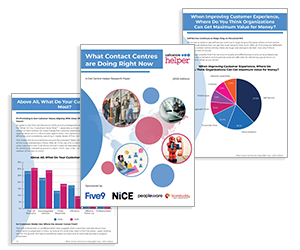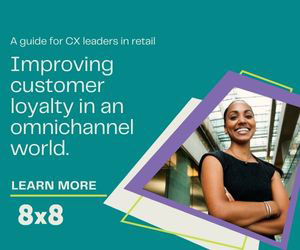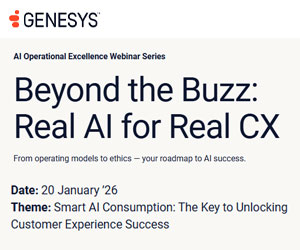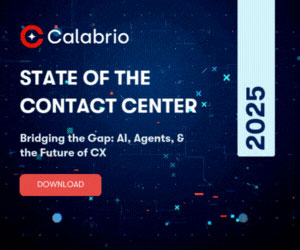Alicia Smith at Five9 looks at the CX metrics that matter most, how to measure them effectively, and how to use that data to fuel growth.
Customer experience is the heartbeat of business growth. When products and services start to feel the same, the experience you deliver is your most durable competitive edge.
In fact, 73% of customers say a good experience is important to their purchasing decisions. But measuring customer experience isn’t as simple as tracking sales or web traffic. It requires the right framework, the right metrics, and the discipline to act on what you learn.
The Three Essential CX Metrics
These three metrics are the foundation for measuring customer experience in a meaningful way:
Net Promoter Score (NPS)
NPS tracks customer loyalty and advocacy. If growth depends on word-of-mouth, NPS reveals whether you’re creating promoters or critics.
Customers answer: “How likely are you to recommend us on a scale of 0–10?” Promoters (9–10) fuel growth, passives (7–8) are at risk, and detractors (0–6) can harm your reputation.
How to measure NPS: Run a recurring survey (quarterly is common) and track your NPS trend over time. Pair scores with customer comments for context.
Customer Satisfaction Score (CSAT)
CSAT measures satisfaction with a specific interaction, like a support call or purchase. In other words, CSAT tells you if your customers are leaving delighted or disappointed.
How to measure CSAT: Deploy short surveys immediately after key touchpoints. Keep it simple: one or two questions, rated 1–5 or “very satisfied” to “very unsatisfied.”
Customer Effort Score (CES)
This shows how easy it is for customers to get what they need. The less effort they expend, the more likely they are to stay. If getting help feels like hard work, CES shows you where friction drives customers away.
How to measure CES: After a support interaction, ask: “How easy was it to resolve your issue today?” Responses highlight friction points in the journey.
Beyond the Basics
NPS, CSAT, and CES are powerful, but they become even more actionable when paired with supporting measures like:
- Customer Churn Rate: How quickly customers leave. A rising churn rate is a red flag.
- Customer Lifetime Value (CLV): The better the experience, the more valuable each customer becomes.
- First Contact Resolution (FCR): Solving issues the first time reduces customer effort, and costs.
- Customer Retention Rate: The inverse of churn. Strong retention shows you’re consistently delivering value.
Building a CX Measurement Framework
Collecting numbers isn’t enough. You need a process that ties metrics to business impact. Here’s how:
- Map your customer journey. Identify the critical touchpoints—onboarding, billing, support, renewal, where feedback matters most.
- Match metrics to moments.
- Use CSAT to measure satisfaction with a transaction.
- Use CES after service interactions.
- Use NPS quarterly for a big-picture view.
- Apply customer experience analytics. Don’t just look at scores—analyze patterns, themes, and verbatim comments to understand the “why.” Break data down by channel, product line, or customer segment for sharper insights.
- Close the loop. Share results across teams. If CES reveals customers struggle with password resets, simplify the flow. If NPS dips, call detractors directly to learn why. Small fixes, informed by data, create big gains.
From Measuring to Optimizing
Once you have a rhythm of measuring, the real value comes from optimization.
Here’s how companies are applying CX insights:
- Personalization – Tailor journeys based on feedback and behavioural data.
- Omnichannel support – Deliver consistent service across chat, social, voice, and more.
- Empowered employees – Agents with the right tools resolve issues faster and deliver more human connections.
- Proactive CX – Don’t wait for customers to tell you what’s broken. Anticipate needs and fix friction before it happens.
This blog post has been re-published by kind permission of Five9 – View the Original Article
For more information about Five9 - visit the Five9 Website
Call Centre Helper is not responsible for the content of these guest blog posts. The opinions expressed in this article are those of the author, and do not necessarily reflect those of Call Centre Helper.
Author: Five9
Reviewed by: Megan Jones
Published On: 31st Oct 2025
Read more about - Guest Blogs, Five9






 Five9 empowers organizations to create hyper-personalized and effortless AI-driven customer experiences that deliver better business outcomes. Powered by Five9 Genius AI and our people, the Five9 Intelligent CX Platform is trusted by 3,000+ customers and 1,400+ partners globally. The New CX starts here and it's at the heart of every winning experience.
Five9 empowers organizations to create hyper-personalized and effortless AI-driven customer experiences that deliver better business outcomes. Powered by Five9 Genius AI and our people, the Five9 Intelligent CX Platform is trusted by 3,000+ customers and 1,400+ partners globally. The New CX starts here and it's at the heart of every winning experience. 































